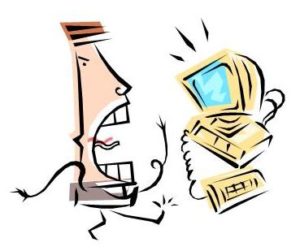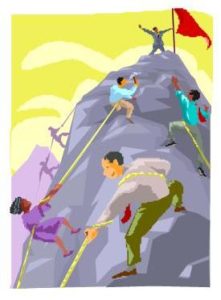Making Successful Changes
By Ellen & Daniel Borowka
I’m sure you’ve had times in your life when making a change becomes a big challenge. Perhaps you want to change how you deal with certain situations or a part of your lifestyle like your diet or exercise. Change is very difficult no matter what we want to change. We start out with good ![MC900437519[1]](https://lighthouseconsulting.com/wp-content/uploads/2013/10/MC9004375191.png) intentions then for one reason or another; we go back to the way we’ve always done something. So, how do we make changes that stick?
intentions then for one reason or another; we go back to the way we’ve always done something. So, how do we make changes that stick?
What is blocking change?
Well, the first piece of the puzzle is looking at what is blocking the change. Sometimes, we just want a problem to disappear, so we make changes as a “fix-it” solution. Fix-its are rarely good changes as they are usually based on unrealistic or unreasonable expectations of a situation or ourselves. Like those times, when we may have stopped eating altogether to lose some weight or took a vacation to fix a troubled relationship. First, it helps to take a realistic view of the situation to be changed and have an understanding of the limitations and strengths involved.
Understanding our limitations
For example, if you want to change a troubled relationship, whether family or work, one should have realistic expectations of both one’s self and those involved. It would be frustrating and unhealthy to expect to be able to change another person or control the relationship to make everyone happy. We can only change our own behavior and ourselves. It’s important to have a balanced perspective of the situation. We can’t expect to make magical changes or to ‘save’ those around us. At the same time, we should not try to underestimate our strengths and abilities. If you have trouble evaluating the situation, then be sure to get feedback from unbiased and supportive friends, counselors or clergy.
Finding our focus
Sometimes, we want to change something that is so big that we feel overwhelmed. So, we end up either trying to put band-aids on this big problem or give up altogether. It’s helpful to focus only on parts of the problem and take one piece at a time. For example, let’s say an individual doesn’t feel good about him or her self. If that person would try to change everything at once, he or she would probably give up. An alternative would be to pick one thing to change, like shyness, and focus on that first. However, whenever making changes in one’s self, please get a realistic viewpoint from others. We are often very demanding of ourselves and may try to change what doesn’t need changing at all. This violates our true self – our style and sense of being, because we deny who we are. Sometimes, the change we have to make is appreciating who we are and that is a big change!
What are my motives for change?
Once you have focused on to a specific and manageable problem, ask yourself some questions about it. Why do you want to change it? What about the situation do you want changed and why? What are you expecting to get out of this change? At this point, motives for the change need to be examined in depth to see if they are healthy reasons. For example, if you want to lose weight to please others or because you don’t like yourself, then there may be bigger issues at stake. Look at what is underneath the problem and ask yourself, “What is really bothering me about this situation?” These issues need to be looked at. Otherwise, the change would only be at the surface, and surface changes do not last very long nor solve the real problem.
Taking small steps to change
Next, consider one small step you can take to begin the change process. An old Chinese proverb says, “The man who removes a mountain begins by carrying away small stones.” Change is much easier and less scary when it is done in small steps. For example, to work on shyness, one might begin by saying hi to the neighbors or the cashier at  the supermarket and work up to small, light conversations with others. Then eventually build up to possibly joining a club and participating in activities or committees. The key is taking small steps in change, rather then overwhelming, sweeping changes. A good example of small changes is when I wanted to get back into doing artwork, but froze when I sat down in front of the blank canvas. So, I started out with using crayons and letter-sized paper, and just making shapes and using different colors together. I told myself that the end result doesn’t matter (lessening expectations and self-judgement), and what was important is the experience of creation (refocusing on the true need). This made the process less intimidating so I could get back to something I loved so much. From those small steps, I moved on to using different materials and techniques while feeling more confident in my artistic abilities.
the supermarket and work up to small, light conversations with others. Then eventually build up to possibly joining a club and participating in activities or committees. The key is taking small steps in change, rather then overwhelming, sweeping changes. A good example of small changes is when I wanted to get back into doing artwork, but froze when I sat down in front of the blank canvas. So, I started out with using crayons and letter-sized paper, and just making shapes and using different colors together. I told myself that the end result doesn’t matter (lessening expectations and self-judgement), and what was important is the experience of creation (refocusing on the true need). This made the process less intimidating so I could get back to something I loved so much. From those small steps, I moved on to using different materials and techniques while feeling more confident in my artistic abilities.
Slow change creates significant progress
Once you have discovered a good small step – put it into action. Depending on severity of the problem, one may need to start out very slowly with the first step and repeat a few times for significant progress to be made. For example, if one is very shy, the first step might be repeated once or twice a week, and work up to doing it daily until one feels more comfortable to move onto the second step.
Celebrate and record your progress
After each step, celebrate your small step even if you feel the result was not as you expected. Remember that when you first started learning something new, like riding a bike, you probably didn’t do it perfectly. It took patience, practice and perseverance. Celebrate your courage, the experience of change, and your desire to take care of yourself. It is important to celebrate and appreciate yourself when you are in the change process. Record your progress and achievements. This can instill a sense of accomplishment as well as help to identify any further trouble spots in your progress.
Support is a necessity
Most of all, support is crucial during change. Seek support and feedback from understanding friends and others. Find a friend who shares your goals so you can help each other in making changes. Recognize that change is very hard and scary. As I said previously, we are very demanding on ourselves. We expect ourselves to be perfect and handle everything with ease. In actuality, we are human. It is ok to struggle and to be afraid as long as we don’t allow the fear or obstacles to block our progress. Give yourself support by challenging self-criticism, and telling yourself nurturing statements daily. Some examples of a nurturing statement are, “I appreciate myself for who I am” and “It’s ok to be imperfect.”
Fear of failure
Finally, a big obstacle for change is our natural fear of failure. There are two quotes that can give us perspective on failure. The first is, “Failure is never final! The only time you  can’t afford to fail is the very last time you try. Failure does not mean we should give up; it just means we have a reason to start over.” (Don Shelby) The second, by Samuel Johnson, “Great works are performed not by strength but by perseverance.” We may get frustrated or disappointed, and yet, we need to venture on in spite of these obstacles. Change comes through with patience and determination to overcome the challenge that has confronted us.
can’t afford to fail is the very last time you try. Failure does not mean we should give up; it just means we have a reason to start over.” (Don Shelby) The second, by Samuel Johnson, “Great works are performed not by strength but by perseverance.” We may get frustrated or disappointed, and yet, we need to venture on in spite of these obstacles. Change comes through with patience and determination to overcome the challenge that has confronted us.
Permission is needed from Lighthouse Consulting Services, LLC to reproduce any portion provided in this article. © 2014 This information contained in this article is not meant to be a substitute for professional counseling.
Dana Borowka, MA, CEO and Ellen Borowka, MA, Senior Analyst of Lighthouse Consulting Services, LLC with their organization constantly remain focused on their mission statement – “To bring effective insight to your organization”. They do this through the use of in-depth work style assessments to raise the hiring bar so companies select the right people to reduce hiring and management errors. They also have a full service consulting division that provides domestic and international interpersonal coaching, executive onboarding, leadership training, global options for expanding your business, sales and customer service training, operational productivity improvement, 360s and employee surveys as well as a variety of workshops. They have over 25 years of business and human behavioral consulting experience. They are nationally renowned speakers and radio personalities on this topic. They are the authors of the books, “Cracking the Personality Code” and “Cracking the Business Code”. To order the books, please visit www.lighthouseconsulting.com.
If you would like additional information on this topic or others, please contact your Human Resources department or Lighthouse Consulting Services LLC, 3130 Wilshire Blvd., Suite 550, Santa Monica, CA 90403, (310) 453-6556, dana@lighthouseconsulting.com & our website: www.lighthouseconsulting.com.
Lighthouse Consulting Services, LLC provides a variety of services, including in-depth work style assessments for new hires & staff development, team building, interpersonal & communication training, career guidance & transition, conflict management, 360s, workshops, and executive & employee coaching. Other areas of expertise: Executive on boarding for success, leadership training for the 21st century, exploring global options for expanding your business, sales and customer service training and operational productivity improvement.


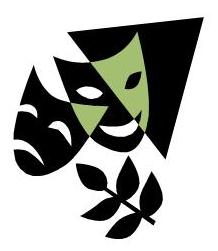

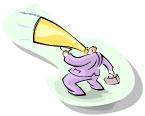
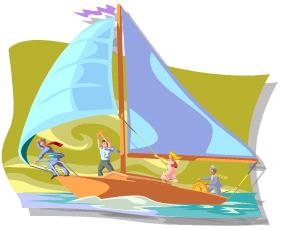
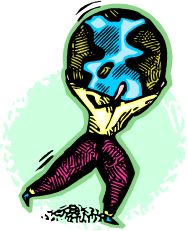
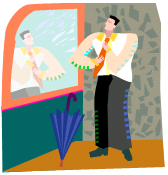








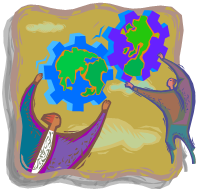
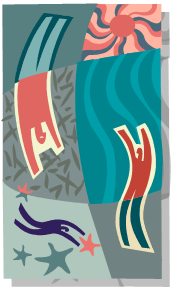


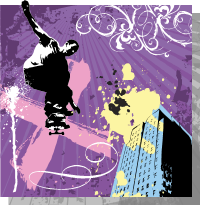


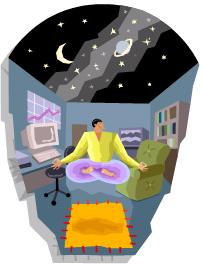
 Lose That Excess Baggage
Lose That Excess Baggage Be honest with yourself about flaws in yourself and others. Look at your part in those problem situations and what you could do differently. Chip away at the old behaviors and find small ways to change. An example could be pleasing others to control them. You could learn to be more direct for what you want or need. Or rationalizing one’s moodiness where instead you could develop guidelines for minimizing the moods and how they impact others.
Be honest with yourself about flaws in yourself and others. Look at your part in those problem situations and what you could do differently. Chip away at the old behaviors and find small ways to change. An example could be pleasing others to control them. You could learn to be more direct for what you want or need. Or rationalizing one’s moodiness where instead you could develop guidelines for minimizing the moods and how they impact others.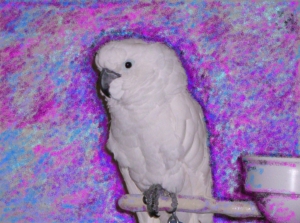 So, I leave you with this thought: How often do you convince yourself that you cannot fly, when you really can? To quote what President Abraham Lincoln said 160 years ago: “Most folks are as happy as they make up their minds to be.” The same can be said for self-esteem. Happy flying!
So, I leave you with this thought: How often do you convince yourself that you cannot fly, when you really can? To quote what President Abraham Lincoln said 160 years ago: “Most folks are as happy as they make up their minds to be.” The same can be said for self-esteem. Happy flying!